Take it offline!
This Education in Motion resource is also available as a printable PDF.
Download PDF
Mobility devices for infants and children can come with many different features and accessories. When deciding which option is most suitable for a child, it can help to make a list and prioritize the key requirements.
The market now offers a range of adaptive strollers, positional strollers, and wheelchairs that can make choosing the appropriate mobility base seem daunting. Considerations when selecting the optimal mobility base include the need for growth, length of time in the seat, size when folded, transit options, and ability to provide appropriate postural support. Pediatric wheelchairs for dependent children can offer a broader range of personalization for frame color, embroidery, and selections for wheels to manage different terrains & negotiate tight spaces.
Let's take a look at an example of each of these pediatric mobility base types and what they offer.
ZIPPIE Voyage® Stroller
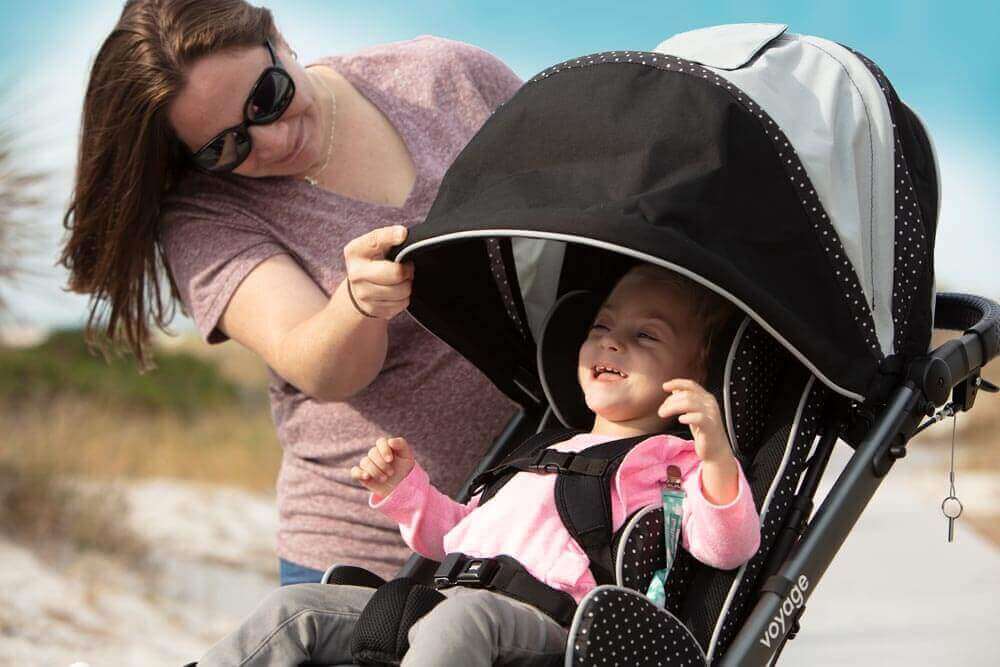
The ZIPPIE Voyage is an early intervention tilt-in-space stroller designed to provide moderate-to-complex postural support for a growing and changing young child. The Voyage is suited for children 0-3 years old and offers ease of use for a busy family. Growth is built in and the stroller features an easy-to-fold design that mimics everyday strollers. The ability to reverse the seat position, tilt through 35 degrees with a single lever, and recline flat makes it practical for monitoring the child, changing diapers, and providing rest positions throughout the day. The seat is easily removed for installation on an indoor high/low booster base, which provides support throughout the day at child play level as well as at high chair level. Functional life support accessories can provide accommodation for critical equipment such as ventilators and oxygen tanks, in addition to accessories beneficial to the caregiver for everyday comfort.
ZIPPIE Sphynx™ Tilt Wheelchair
The ZIPPIE Sphynx is designed for portability and ease of transportation, and provides a quick forward-folding frame. This is best suited for children with mild-to-moderate postural support needs. It's the tilt wheelchair for families on the go, but whose child still needs postural support. Being compatible with the JAY cushion range allows for improved pressure relief and postural support while still being a lightweight, easy-to-transport mobility base. The unique features of the Sphynx combines quickly adjustable back support recline and an adjustable static seat tilt of 10°, 20°, and 30° in a larger size range to support growing children and accessories.
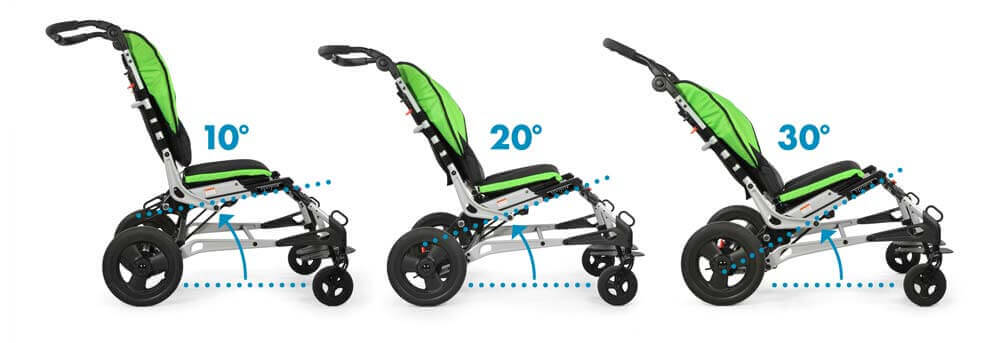
ZIPPIE TS® Tilt-in-Space Wheelchair
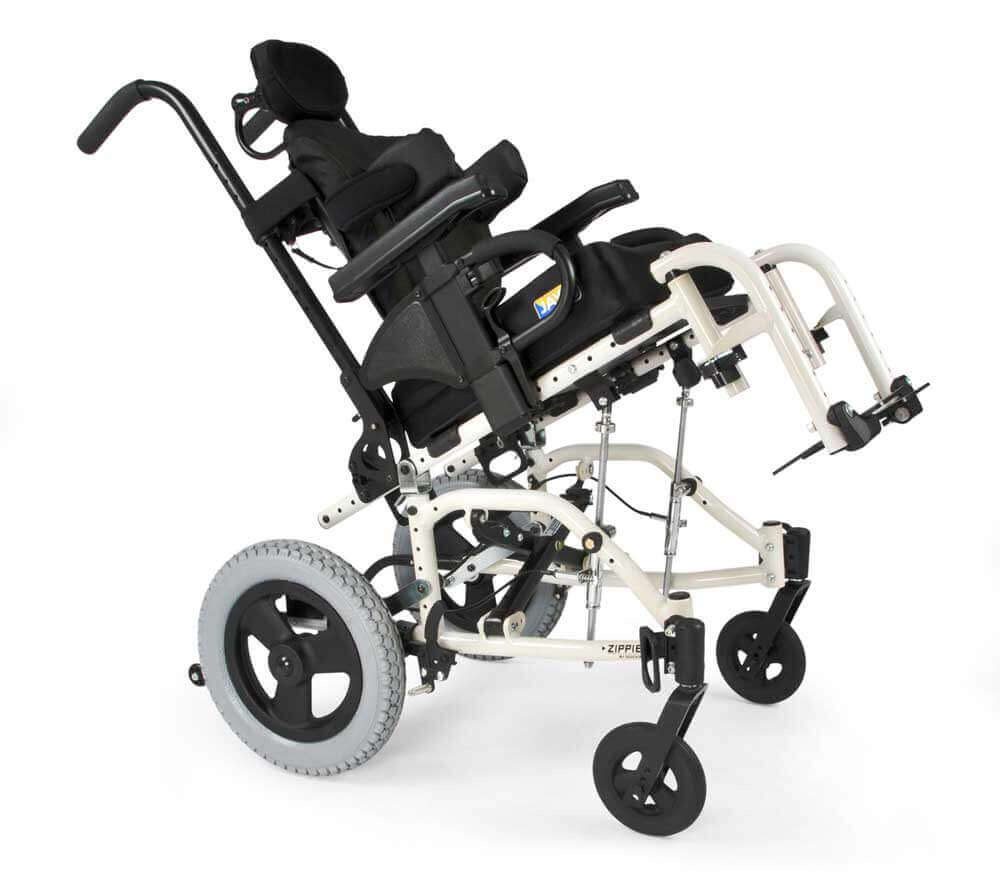
The ZIPPIE TS is a pediatric folding dynamic tilt-in-space wheelchair. Its unique pivot tilt design allows 45 degrees of tilt with an easy folding mechanism – ideal for families that need the wheelchair to fold for transport. The ZIPPIE TS is appropriate for children 4 years and older with moderate-to-complex postural needs. Due to its ease of storage, it suits children moving between home, school, and other community spaces. The ZIPPIE TS has built-in size growth, allowing it to grow with the child. Tilt provides skin protection, enhances posture, and increases sitting tolerance. Due to caster, wheel, armrest, and legrest options, the ZIPPIE TS can accommodate different levels of client complexity while providing mobility across environments.
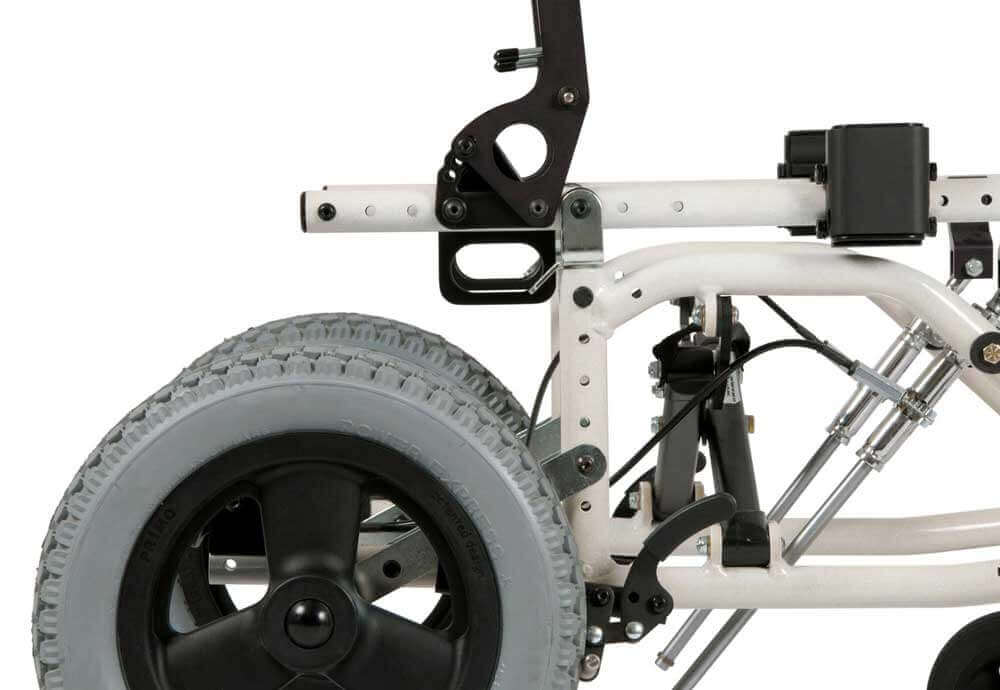
The ZIPPIE TS was designed to accommodate the changes a child may experience throughout the life of the wheelchair. Up to 2" of seat width and up to 5" of seat depth adjustments allow the TS to grow, while adjustable components keep the child comfortable and properly positioned during development.
ZIPPIE IRIS® Tilt-in-Space Wheelchair
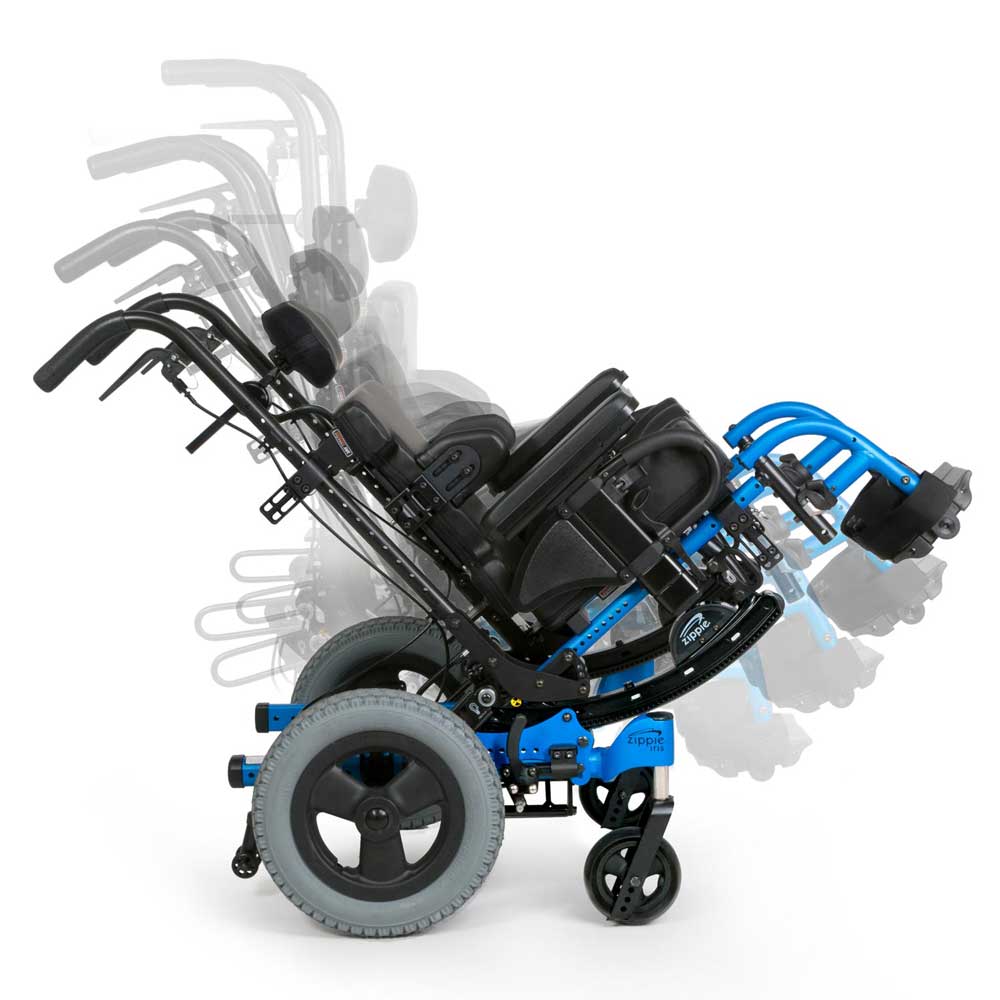
The ZIPPIE IRIS is a pediatric dynamic tilt-in-space wheelchair has has the option of rigid or folding frames. The IRIS is appropriate for children 4 years and older with moderate-to-complex postural needs. It also suits mobility needs across varying environments as the child moves between home, school, and other community spaces. The ZIPPIE IRIS has built-in growth and an additional growth kit is available to maximize the chair's lifespan to accommodate the growing, changing child. Having a full 55 degrees of tilt range (which can be set to start from 5 degrees of anterior tilt to 5 degrees of fixed posterior tilt) enables it to assist with standing transfers as well as provide gravity-assisted postural support throughout the day. Many options are available, such as caster sizes, seat-to-floor heights, back canes, and push handles. This high degree of individualization allows the ZIPPIE IRIS to accommodate different levels of client complexity while providing mobility across environments.
The chosen pediatric mobility base will determine the available growth, seating options, size, and what postural support functions like tilt & recline are available. The table below outlines some key clinical factors and matches those features available on the ZIPPIE Voyage, Sphynx, TS, and IRIS.
| |
ZIPPIE Voyage |
ZIPPIE Sphynx |
ZIPPIE TS |
ZIPPIE IRIS |
| Age |
0 to 3 |
4 and up |
4 and up |
4 and up |
| Typical Diagnosis |
Cerebral Palsy, Rett's, Spinal Bifida, Muscular Dystrophy, Fragile X, SMA |
Cerebral Palsy, Autism Spectrum Disorder, Down Syndrome, Juvenile Arthritis, Rett's, Seizure Disorders |
Cerebral Palsy, Osteogenesis Imperfecta, Muscular Dystrophy, Fragile X, SMA |
Cerebral Palsy, Osteogenesis Imperfecta, Muscular Dystrophy, Fragile X, SMA |
| Weight Limit |
75 lbs. |
250 lbs. |
165 lbs. |
225 lbs. |
| Seat Width Range |
6" to 12" |
10" to 18" |
10" to 18" |
Folding: 10" to 16"
Rigid: 10" to 18" |
| Seat Depth Range |
8" to 13" |
10" to 19" |
13" to 20" |
10" to 18" |
| Seating Options |
Two ranges of seating options which can accommodate clients needing mild-to-high postural support. Range of belt, harness, and head support options. |
Tension-adjustable sling back, depth-adjustable seat sling, and upholstery with range of belt and harness options. Also compatible with JAY seating. Accommodates clients with mild-to-moderate postural support needs. |
Sling upholstery through to fully customer-specific seating supports. Accommodating clients with mild-to-high postural support needs. |
Sling upholstery through to fully customer-specific seating supports. Accommodating clients with mild-to-high postural support needs. |
| Tilt |
Dynamic 35° range (+5° to 30°) |
Static 10°, 20°, and 30° |
Dynamic range 0° to 45° |
Dynamic range 55°
Starting at +5°, 0°, -5° |
| Recline |
100° dynamic recline range (80° to 180°) |
85° to 100° quick-release adjustment |
Available through Built-4-Me |
30° dynamic recline range (available if 40° tilt range selected) OR fixed recline up to 30° |
| Available Accessories |
Hi/Low booster base, O2/IV holder/vent tray, under-seat basket, tray, canopy, rain cover, cup holder |
Tray, utility/vent tray, canopy, under-seat basket, rain cover, cup holder, curb tipper |
Tray, canopy, IV and vent tray through Built-4-Me |
Tray, IV pole, vent tray, canopy, water bottle holder |
| Built-in Growth |
Yes; in seating and frame |
Yes; in seating and frame including 5" in depth |
Yes; 2" in width and 5" in depth |
Yes; in seat, width, depth, back height, and leg length |
| Growth Kit Available |
No |
Yes |
Yes |
Free True Fit growth kit in first 5 years (receive parts to grow the frame) |
| Folded Footprint |
35"L x 22"W x 12"H |
33"L x 25.5"W x 16.75"H |
33"L x 38"W x 13"H |
36"L x 28"W x 37"H |
| Weight |
50 lbs. (base: 28 lbs., seat: 22 lbs.) |
30 lbs. (transit: 28 lbs.) |
29 lbs. (transit: 26 lbs.) |
35.3 lbs. (transit: 32 lbs.) |
| Transit |
Crash tested for occupied transit |
Crash tested for occupied transit |
Crash tested for occupied transit |
Crash tested for occupied transit |
References
- Consortium for Spinal Cord Medicine, Pressure Ulcer Prevention and Treatment Following Spinal Cord Injury: A Clinical Practice Guideline for Healthcare Professionals 2nd ed., 2014.
- Sonenblum SE, Sprigle SH. The impact of tilting on blood flow and localized tissue loading. J Tissue Viability. 2011 Feb; 20(1):3-13. doi: 10.1016/j.jtv.2010.10.001. Epub 2010 Dec 8. PMID: 21145240.